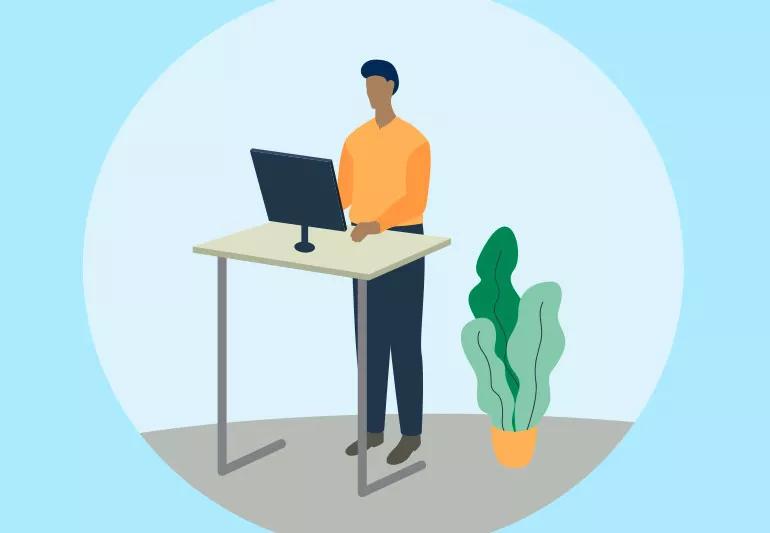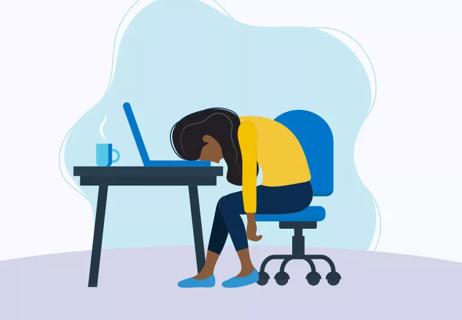The more you sit, the more you risk serious health issues

If you have an office job where you sit hunched over a desk, clicking away at a computer most of the day, you need to take steps – literally – to reduce your sedentary habits. Our bodies are built to move, so sitting for hours at a time is bad news for your health (hello dead butt syndrome!).
Advertisement
Cleveland Clinic is a non-profit academic medical center. Advertising on our site helps support our mission. We do not endorse non-Cleveland Clinic products or services. Policy
“Some research suggests that people who sit excessively have increased risk for obesity, diabetes and heart disease,” says occupational therapist Michael Milicia. “Even if you’re actively working, usually your lower body is relatively static, and there is decreased circulation. Also, less movement throughout your day means more aches and pains.”
Studies show that standing and moving more throughout the day will positively impact your health. Exercise and activity level (or movement in general) is one of the most dramatically modifiable risk factors that individuals can change.
While you probably can’t completely get away from sitting at your desk (or at least sitting for some parts of your workday), there are things you can do to be an “active sitter.”
Here are a few recommendations:
Advertisement
Prolonged staring at a computer screen does more damage than good, aka it can cause computer vision syndrome. Things like changing your viewing angle, practicing the 20-20-20 rule and remembering to blink often, can help.
Office workers typically conform to whatever configuration their desks and work stations are set at when they get them, but things don’t have to stay that way. It’s easy to set up an ergonomic office so that your work station doesn’t cause you pain or a loss in productivity.
Here is Milicia’s advice on switching up your work area:
Advertisement
Learn more about our editorial process.
Advertisement

A hostile work environment can foster a culture of aggression, doubt and negativity that’s harmful to your health and success

Not having paid sick leave, working night shifts and lacking consistency in schedule or pay can cause serious psychological distress

Schedule breaks, stand and stretch, and rely on alarms, to-do lists and other tools to help keep you focused

Decide what you’re OK sharing, respect others and speak up if you feel uncomfortable

From ‘Sunday scaries’ to passive-aggressive coworkers, you can learn to navigate your workplace woes

You deserve peace of mind in your workplace

Putting in long hours at work can be bad for your health

If you’re feeling short of breath, sleep can be tough — propping yourself up or sleeping on your side may help

If you fear the unknown or find yourself needing reassurance often, you may identify with this attachment style

If you’re looking to boost your gut health, it’s better to get fiber from whole foods